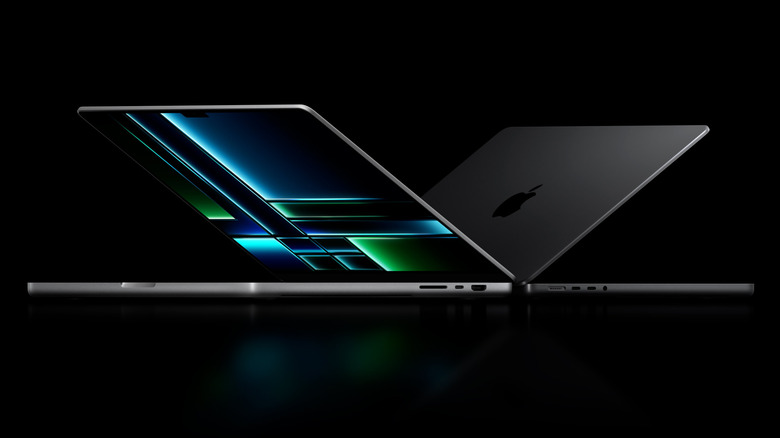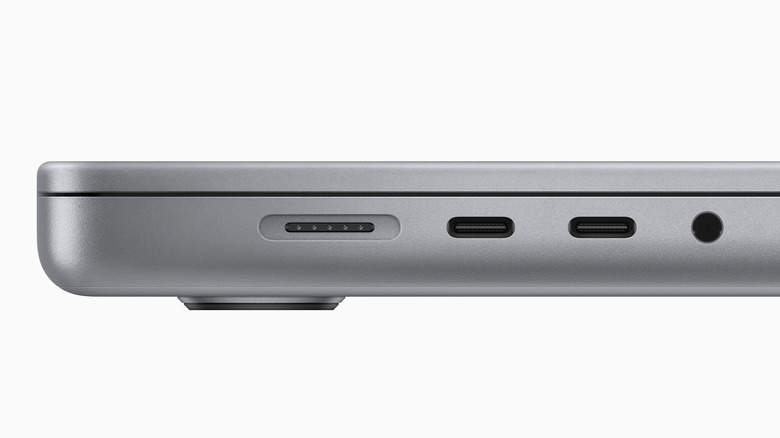Apple Just Gave The MacBook Pro A Big Performance Boost With New M2 Pro And M2 Max Chips
Apple has revealed its latest flagship laptops, with the 2023 MacBook Pro adding the new M2 Pro and M2 Max chips for the fastest macOS performance in a portable form-factor. While outside they may not look different from the current MacBook Pro models, it's inside where things get really interesting. That starts with the chipsets, but the upgrades don't end there.
Clearly, though, the M2 Pro and M2 Max are the stars of the show here. Cupertino's latest iteration of Apple Silicon is billed as "the world's most powerful and efficient chip for a pro laptop" and, though there'll undoubtedly be arguments among Intel and AMD as to whether that's really the case, there's no denying that Apple's decision to go in-house with its processor design has been a positive one.
Compared to the last Intel-based MacBook Pro, Apple says, the new chips are up to 6x faster at effects rendering. Color grading is up to twice as fast. Compiling in Xcode is up to 2.5x faster, while Adobe Photoshop image processing is up to 80% faster.
The star here is speed
The improvements aren't only compared to the long-discontinued Intel laptops, mind. The M2 Pro and M2 Max are around 20-40% faster at these tasks than their Apple Silicon predecessors, Apple claims.
The M2 Pro has a 10- or 12-core CPU, with up to eight high-performance and four high-efficiency cores. The result, Apple says, is up to 20% more performance than the old M1 Pro, itself no slouch. There's up to 32GB of unified memory — shared, as before, between CPU and GPU cores — with 200GB/s of unified memory bandwidth, double the amount in M2. The GPU has up to 19 cores, and the Neural Engine is now 40% faster, too.
For those who need maximum grunt, though, there's the M2 Max. That has a next-gen 12-core CPU with up to eight high-performance and four high-efficiency cores; it's enough for up to a 20% performance improvement over the MacBook Pro with M1 Max. The new GPU, meanwhile, has up to 38 cores, for up to a 30% graphics performance bump over M1 Max. The new chipset has 400GB/s of unified memory bandwidth — twice that of the M2 Pro — for up to 96GB of unified memory.
Connectivity and battery boosts, too
Performance may be the headline feature, but there's more to the 2023 MacBook Pro update than that. The three Thunderbolt 4 ports remain, along with MagSafe 3 for charging, and an SDXC card slot. However, the HDMI port now supports 8K displays up to 60Hz and 4K displays up to 240Hz.
There's also Wi-Fi 6E support now, for those with faster wireless networks. If you have a suitable router, Apple says, you could see twice the throughput. Battery life is now up to 22 hours, configuration depending.
The choice of 14-inch or 16-inch Liquid Retina XDR display, along with the 1080p FaceTime HD camera (in its controversial notch) and six-speaker audio system are carried over. Pricing kicks off from $1,999 for the 14-inch MacBook Pro 2023, and from $2,499 for the 16-inch MacBook Pro 2023. Orders open today, and shipping — along with in-store sales — is expected to kick off January 24, 2023.


